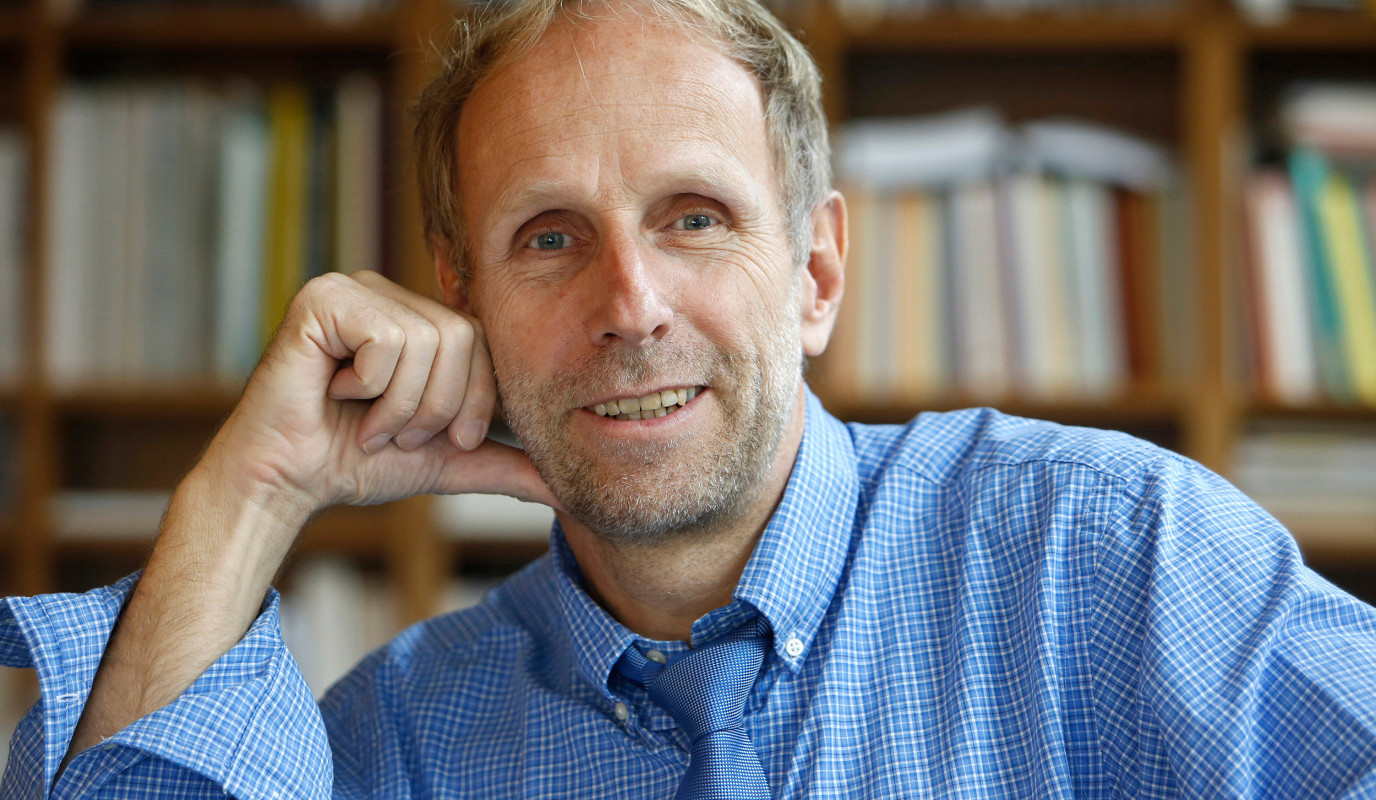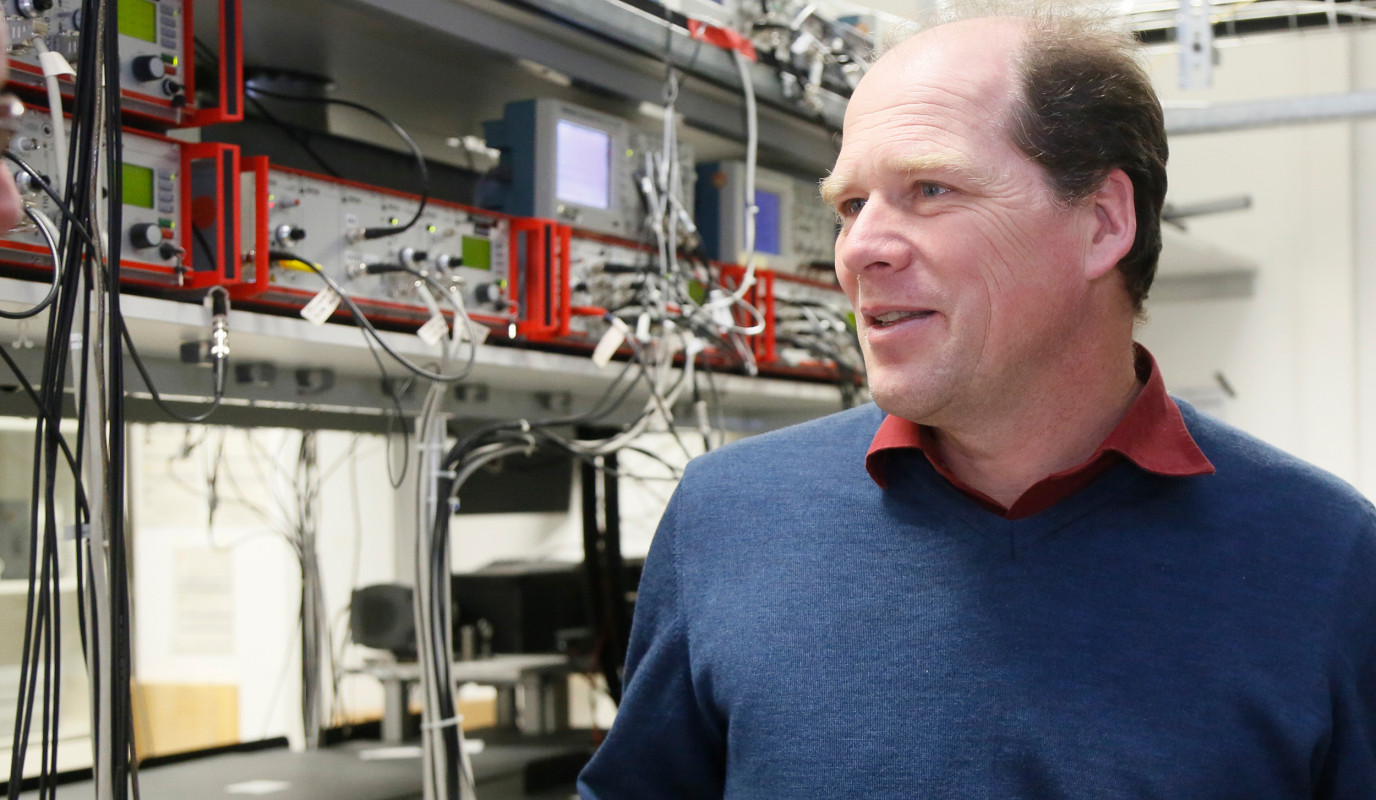Third funding period for CRC/Transregio on Condensed matter systems with variable many-body interactions
The Transregional Collaborative Research Center Condensed matter systems with variable many-body interactions (CRC/TRR 49) is coordinated by Goethe University Frankfurt in partnership with Johannes Gutenberg University Mainz (JGU), the Max Planck Institute for Polymer Research (Mainz), and TU Kaiserslautern. Together, researchers in the fields of quantum optics, solid-state physics, and chemistry are investigating the collective behavior of interacting many-body systems.
One thing that humans and quantum particles have in common is the fact that they often exhibit different behavior when in groups than when alone. The best-known example in physics of such many-body effects is undoubtedly superconductivity, an effect where, under certain conditions, electrons combine to form so-called ‘Cooper pairs’, which are able to pass through superconductors without any loss due to friction, thus allowing electrical current to flow unhindered. Many-body effects also play a decisive role in the formation of magnetic vortex structures.
In order to investigate this ‘crowd psychology’ of quantum particles, researchers in the areas of solid-state physics, quantum optics, and materials science based in Frankfurt, Mainz and Kaiserslautern decided to join forces. In 2007, under the aegis of Goethe University Frankfurt, they set up the Transregional Collaborative Research Center Condensed matter systems with variable many-body interactions. Their efforts have yet again been rewarded. After a very positive evaluation of research projects undertaken to date, the German Research Foundation (DFG) decided to fund the research association for a further four years to 2019 by providing a grant worth some €8 million.
"In a research association like our CRC/Transregio, cooperation between all parties involved is of the utmost importance, as this is how scientific synergies are created that generate insights going well beyond those obtained through individual, independent projects," stresses Michael Lang, Professor at the Institute of Physics of Goethe University Frankfurt, the coordinator of the group. "Cooperation starts with our discussing various aspects, which subsequently leads us to formulate specific questions." The workload is then distributed among theoretical and experimental working groups based on their capabilities, as certain aspects are better handled in Frankfurt and others in Mainz or Kaiserslautern. The researchers then hold frequent meetings to discuss their findings, compare them with model calculations and design new experiments. At the end, they are able to see the results of their work appear in joint publications. "We have already published papers to which five different subprojects of our CRC have contributed," recalls Lang, not without pride.
The scientists primarily focus on certain selected model systems. These are ultracold atomic gases in the fields of intersecting laser beams, as well as magnetic thin films in which magnetic forces can be stimulated by exposure to light. "Our initial aim was to understand the basic underlying principles," explains Lang. "We now intend to apply the concepts we have developed to more complex systems." In the first two funding periods of the project (2007-2011 and 2011-2015), researchers therefore focused on aspects such as how many-body systems can be generated in experiments and simulated in theory, identifying the relevant processes involved in the formation of Cooper pairs and how magnetic stimulation results in the generation of a magnetic vortex.
The scientists are now building on these basic insights when, for example, they consider the effect that impurities have when these are present in the materials in which they intend to observe the activities of many-body systems. "Take, for example, the regular structures in which the atoms are arranged in such materials. At absolute zero, lattice structures of this kind would be completely immobile. We perform our experiments at relatively low temperatures, but not absolute zero, and the further away we get from absolute zero and the higher the experimental temperature, the more the atoms tend to jiggle around in their lattice sites. What we hope to clarify at this stage is how this jiggling influences many-body systems," clarifies Lang, outlining the work to be undertaken at CRC/TRR in its recently approved third funding phase.
Of course, the research team includes not only Lang and the other 20 senior research scientists, but also around 25 PhD students and nine postdoctoral researchers who are being trained at the universities of Frankfurt, Mainz and Kaiserslautern, as well as at the Max Planck Institute for Polymer Research in Mainz. Particular emphasis is placed on the promotion of doctoral candidates by means of the integration of a research training group in CRC/TRR 49. However, there is one important aspect in which this differs from the standard form of graduate education. The students are encouraged to independently organize seminars and workshops, specify the subjects to be dealt with and invite speakers, thus actively shaping their own research training group. "They take on responsibilities rather than just acting as passive consumers of information. This allows them to learn through personal experience how the scientific community operates while also providing them with opportunities for networking," says Lang. "The collaboration between graduates ideally complements the cooperation within the CRC as a whole, and young scientists benefit enormously from this process - both in terms of learning and with regard to their own careers."
CRC/TRR 49 focuses on fundamental research, as in the case of the work undertaken by Prof. Ferdinand Schmidt-Kaler at Johannes Gutenberg University Mainz. In his field of quantum optics, what Prof. Schmidt-Kaler does is to, in effect, simulate the properties of real solid bodies. He investigates artificial solid-state crystals consisting of several hundred ytterbium ions and rubidium atoms that are held in a novel combination of ion and atom traps and made to interact. His objective is to gain greater insight into the behavior of real solids consisting of much larger numbers of atoms and electrons. "Of course, cooperation between our experimental working group and solid-state theorists from Frankfurt is extremely important in this regard. The two disciplines both benefit from this," says Schmidt-Kaler. "Collaborating with scientists working in other fields is immensely rewarding. Solid-state physicists, in particular, view our subject from a completely different angle. They look at solids with their tremendous number of particles, whereas my starting point is a single atom." What is shared by all is the desire to know what happens at the atomic level, how particles interact and how they form new states of matter.
"Are you familiar with the story of the caliph and the rice grains?" Schmidt-Kaler asks. A retainer once gifted his ruler a luxurious chessboard. The delighted caliph told the courtier he could state his own reward. The courtier’s request sounded modest. All he asked was that the caliph fill the chessboard with rice as follows - just one grain of rice on the first square, double the number of grains of rice on the second square, and so on doubling up each time: - 1+2+4+8+16... "There isn’t enough rice in the world for the caliph to fulfill his promise," points out Schmidt-Kaler, "and we find ourselves in a similar situation – our system of interacting particles quickly becomes as unmanageable as the number of rice grains." To study interactions in solids, researchers start with a single ion. Each ion represents a tiny magnetic needle. "We gradually build it up from there. We start by observing how two particles interact, and then we add a third particle. The number of possibilities then grows exponentially, as in the story with the rice grains; by the time there are 30 ions, there is no computer in the world that could perform the necessary calculations. The possibilities when it comes to the collective behavior of particles in solid bodies are almost infinite. We are working at the limits and pushing the boundaries as far as we can."
Those participating in the CRC/TRR intend to develop and consolidate certain basic concepts in the third funding period too, in order to gain a better understanding of many-body systems. But this does not exclude making contributions to application-related ideas. The concept of ‘magnetic refrigeration’ was, for instance, developed on the basis of the fact that exposing certain magnetic materials to a changing magnetic field can cause them to cool. Magnetically cooled X-ray detectors are very important in space exploration and magnetic refrigeration may one day provide an environmentally-friendly alternative to conventional technology, and could even be employed in household refrigerators.
The fact that some materials exhibit both ferromagnetism and ferroelectricity under the right conditions is also of relevance here. "When both these effects occur at the same temperature, as in the case of our materials, this is a strong indication that the two properties are directly related," explains Prof. Michael Lang. Once the underlying principle of the many-body effect here has been understood, it should be possible to employ this phenomenon to open up new potential with regard to data storage technology.
Transregional Collaborative Research Centre 49 brings together scientists from very different schools of thought. "We had to start by finding a common language," explains Schmidt-Kaler, "but now there is successful cooperation within the association, and the complementarity of models and theories that we have now had for many years is extremely stimulating. And often it turns up surprises. After all, we are constantly breaking new ground. This really is research at the cutting edge."





